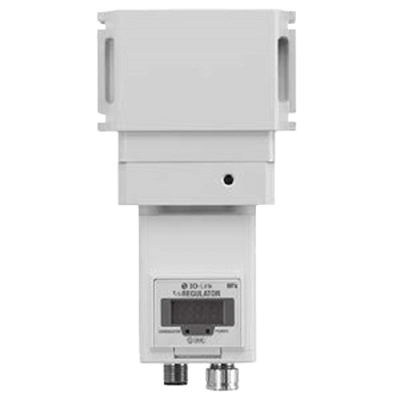What Is an Electro-Pneumatic Regulator?

Electro-Pneumatic Regulator is a device that controls air pressure by means of electrical signals.
They are used in manufacturing facilities where air pressure must be flexibly changed by electrical signals or other means to enable more precise mass production. Most Electro-Pneumatic Regulators control pressure using a pressure regulating valve operated by a coil.
The method of control is feedback control using pressure sensors and input values. Many products are compatible with IoT network platforms, making their adoption suitable for factory automation.
Uses for Electro-Pneumatic Regulators
Pneumatic regulators are used in automotive, home appliance, chemical, food, precision instrument, and pharmaceutical plants. Uses include adjusting output for painting and soldering, precision mixing with air, and removing impurities.
When selecting an Electro-Pneumatic Regulator, consideration should be given to the range of pressures and flow rates supported, the amount of power used, and durability.
1. Adjustment of Paint Spray Jet Volume
The Electro-Pneumatic Regulator is used to control the optimum air volume of the spray paint gun to adjust the paint spray output in the coating process of automobile exteriors.
2. Solder Supply
Electro-Pneumatic Regulators are also used to supply solder in the manufacturing process of substrates. Fluid dispensing can be controlled.
3. Air Supply
Electro-Pneumatic Regulators can control the flow of air. Therefore, they are used, for example, to supply air in the mixing process with air in food factories.
Principle of Electro-Pneumatic Regulators
Electro-Pneumatic Regulator consists of a container with inlet and outlet ports, a pressure regulator valve operated by a coil, a pressure sensor, and a control panel. The pressure sensor is attached to the outlet and connected to the control panel.
The pressure is controlled by the valve, which is operated by the magnetic field connected to the coil and moves according to the amount of current. By opening and closing the valve, the pressure is varied by adjusting the amount of air discharged. During operation, air drawn in from the inlet port passes through the pressure regulating valve and is discharged from the outlet port.
At that time, the pressure is measured by the pressure sensor at the outlet and sent to the control panel. The pressure sensor calculates the difference between the pressure value sent from the pressure sensor and the input value sent from the outside as an electrical signal.
The amount of air to be discharged is calculated for that difference, and the discharge volume is adjusted by opening and closing the valve.
Other Information on Electro-Pneumatic Regulator
1. Dead Zone
Electro-Pneumatic Regulator can control solenoid valves by PWM control, and the flow rate through the solenoid valve increases as duty increases.
However, there is a blind zone, a region where the duty cycle is low and the flow rate does not flow, which is affected by the supply pressure and tends to decrease as the supply pressure increases. This phenomenon occurs because air tends to leak out of the valve seat as the supply pressure increases.
2. Feedback Control
One of the issues with Electro-Pneumatic Regulators is the change in dead zone due to actuator deterioration and supply pressure conditions. This problem causes steady-state deviation (the amount by which the control pressure does not reach the target value).
One means of eliminating steady-state deviation is to use a CPU mounted on an internal control board to vary the compensation component as a pseudo input signal. Since the conventional control loop configuration is maintained, controllability can be easily maintained.
3. Precautions for Use
Before piping, the inside of the piping must be thoroughly flushed (compressed air blown off). Contamination of chips, rust, etc. may cause malfunction.
Electro-Pneumatic Regulators use precision equipment inside, so the compressed air must be clean and free of solids. Otherwise, durability and operating characteristics will be adversely affected.